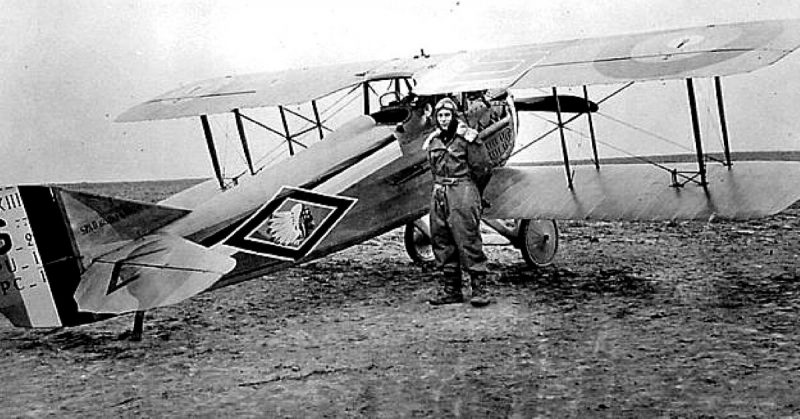The United States declared war on Germany in April of 1917 and began preparing a force to fight from the sky. Hundreds of cadets, with white banded hats, were enrolled in flight schools in the United States Air Service.
Their first objective was to complete ground school. They took courses that prepared them for flight. They learned about aircraft construction, cockpit controls, control surfaces, armament, and how to operate machine guns.
When they took to the air on their first flight with an instructor, they were taken into tailspins and shown how to get out of them. Their first solo flight took them around the airfield, culminating in the real danger and excitement of their first landing.
Upon graduation in 1918, the first squadrons left for Europe. The 103 Aero Squadron was the first to fly combat, flying Spad VII planes with pilots from the famous French Lafayette Escadrille in February of 1918. Out of 327 combat engagements, they only had seven fatalities.
More American pilots came over two months later, the 94th and 95th, flying Nieuport 28s. Soon, when the 27th and 147th arrived to join them and become the famous 1st Pursuit Group, the pilots were upgraded to the Spad S.XIII.
Meanwhile, in Britain, two US fighter squadrons, the 17th, and 148th, were flying Sopwith Camels with the RAF against Germany’s fiercest aces.
The US took its observation squadrons out of old AR1 planes in April of 1918 and put them into the French Salmson plane, giving them the advantage of a rear cockpit outfitted with flexible machine guns.
They also purchased the French Breguet, an awkward looking bomber that was much more functional than attractive. It got the job done attacking rail yards, depots, and the far reaches of troops behind enemy lines.
The next plane in the lineup was American. The DH4 from Dayton, OH was powered by the Liberty Engine and had a rear cockpit that could hold what was needed for the mission whether it be bombs sacks, cameras, or machine guns. There were 1213 of them made, 543 of which saw combat.
This video of original footage from the Great War takes you from the first days of flight school to film of each plane in up close detail or in the air.
https://www.youtube.com/watch?v=7pC90YyP18A
